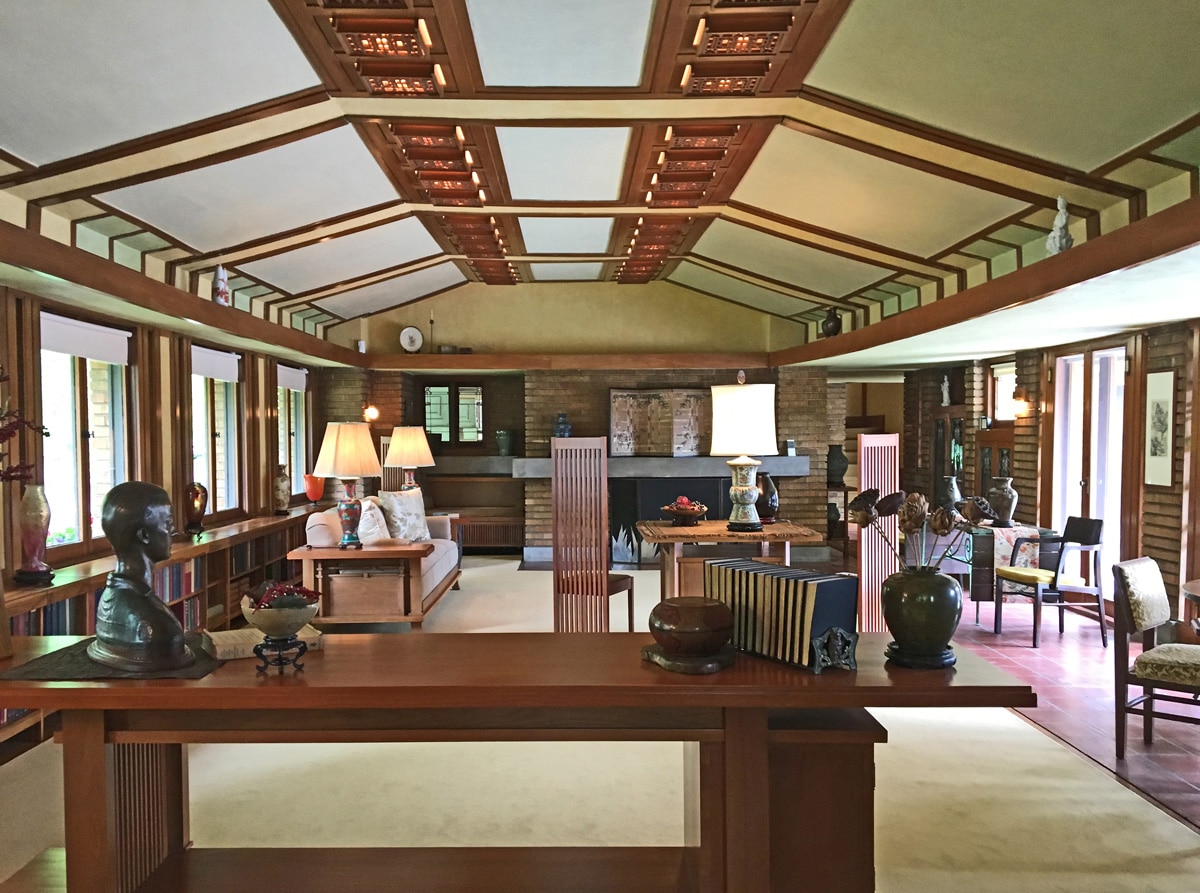Traveling across a broad swath of America to view the works of Frank Lloyd Wright, we stayed true to the artistic theme by staying at three unique Hilton hotels, each in their own way complementing the themes underlining Wright’s work—an art-world beacon in Indianapolis, the eponymous hotel of a historical Grande Dame in Chicago, and an architectural gem in the Arizona desert.
First Stop: The Conrad, Indianapolis
We arrived very late on a balmy Saturday night in downtown Indianapolis, while the city was buzzing and full of fans in town for the Indy 500.
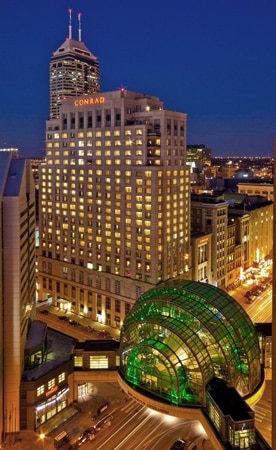
We had the special opportunity to see works by local artists installed in an 8000 sq. ft. exhibition space in the building, which supplemented the popular Collection Suites, a series of rooms each decorated with unique pieces from a different period in art. On the way to their rooms, guests walk through a discreet entryway and feel the architectural compression meant to give contrast to the bright and airy suites. Walking through the door, you’re immediately taken by the ambience of the room, seeming more like a luxury apartment than a hotel room.
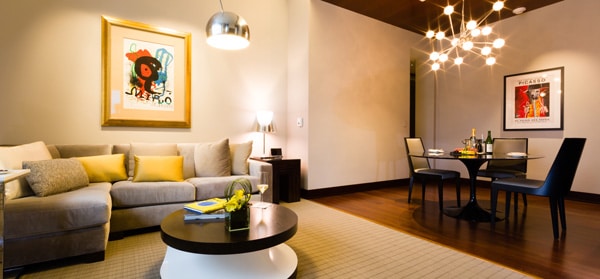
On the left is Joan Miro “Sobreteixims,” and to the right is Pablo Picasso’s “Palais des Papes.”
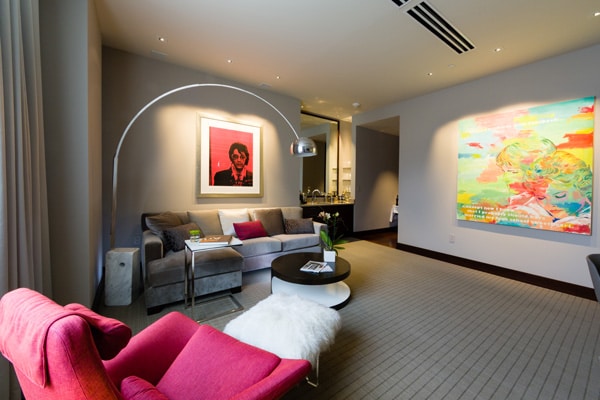
On the left is “Elvis Pink Mugshot” by Russell Young and on the right, David Kramer’s “Working the Social Network” in the Contemporary Suite.
While in Indiana we drove to visit the Samara House in Lafayette then made our way to Chicago.
Next Stop: The Palmer House, Chicago
The history of the gilded Palmer House is inseparable from not just the love story of Bertha and Potter Palmer, but the trial by fire and subsequent transformation Chicago underwent in 1871. Thanks to the concentrated efforts of citizens like the Palmers after the great fire, the city was quickly reconstructed into a showcase of American architecture. Within 2 decades of the fire, it had become the second largest city in the US and a major economic center with the population growing from 324,000 to more than a million. In 1893, Chicago hosted the World’s Columbian Exposition, which had over 27.5 million visitors. Bertha Palmer was the driving force to create the Woman’s Pavillion at the Expo, hiring the first female graduate of the MIT architecture department and helping the exhibitors obtain over 3,000 patents for their wares.
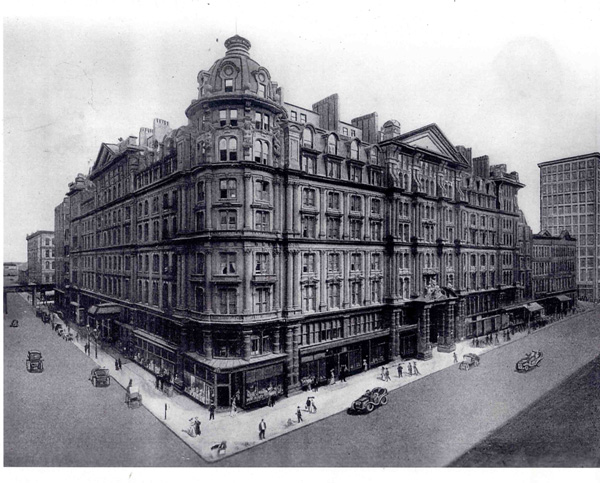
Potter Palmer was headed to California from New York when he stopped in dirty and muddy Chicago in 1850. He saw its potential and stayed to make a fortune in real estate and dry goods, supplying the Civil war with cotton and wool. He was love struck and determined to marry the 13 year old Bertha Honoré, the daughter of a business partner. She said yes to his proposal 8 years later in 1870 when she was 21 and he 44. By then he was worth over 7 million and unusual even for women of her class, Bertha returned with a college degree from Georgetown.
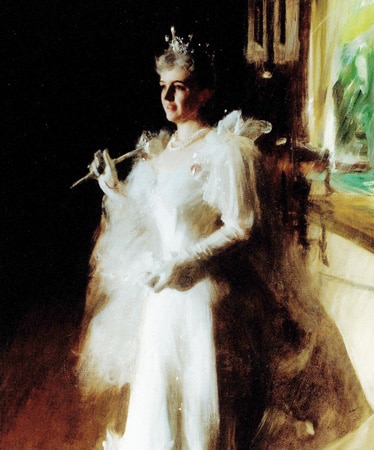
Bertha convinced Potter of their civic duty to remain and help rebuild instead of absconding to New York. Potter secured a 1.7 million dollar loan with his signature alone, rebuilt the new hotel across the street from the former and also developed Lake Shore Drive. John Mills Van Osdel, a contemporary of Frank Lloyd Wright, was hired again to design the second Palmer House.
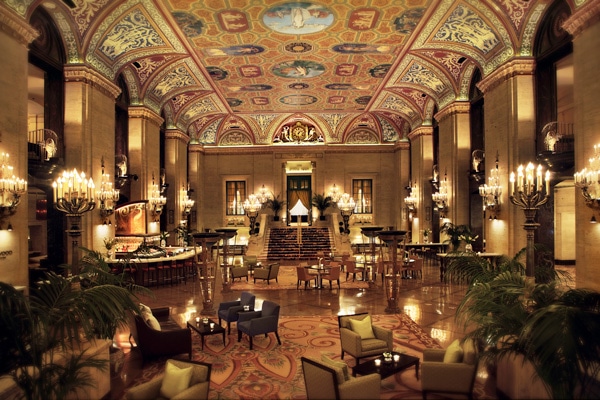
Our Final Stop: The Arizona Biltmore, Phoenix
We were in Scottsdale, Arizona, in blazing August to visit Taliesin West and stayed nearby in Phoenix at this famed resort.
Firstly, all 8 pools are wonderful, especially the Catalina pool lined with namesake tile from Santa Catalina Island in California. William Wrigley, of the chewing gum fortune and the owner of the resort, also owned the island and the tile company famous for its ceramics. We loved the pool as much as Marilyn Monroe and Irving Berlin who dreamt of a White Christmas while lounging under the palm trees.
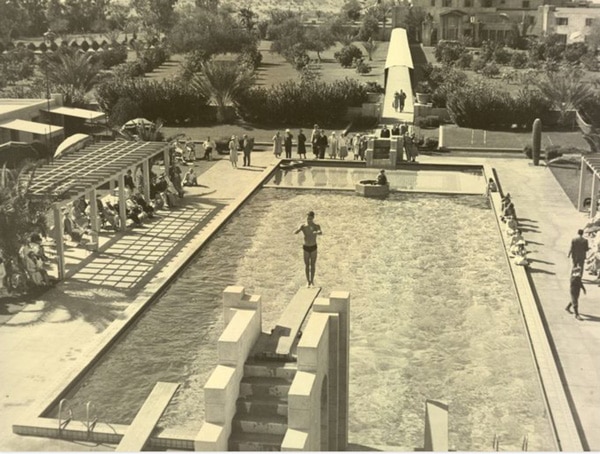
Albert Chase MacArthur is the architect on record, though the ever present confusion that it was Frank Lloyd Wright seems to coincide nicely with our trip. We saw other guests at Taliesin West who also stayed at the Biltmore, making it an essential part of the design pilgrimage.
MacArthur was hired by his two brothers, successful Phoenix businessmen, to design the Arizona Biltmore. He was a student of Frank Lloyd Wright between 1907 and 1909 at his Chicago studio, the birthplace of the “prairie school” of architecture. John Lloyd Wright, Frank’s son, says this about MacArthur and the other 6 students who worked for Wright at the time, “… I know that each one of them was then making valuable contributions to the pioneering of the modern American architecture for which my father gets the full glory, headaches and recognition today!”
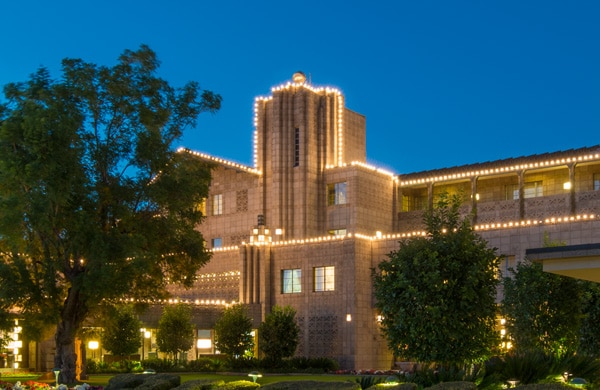
The opening was by invitation only. In fact, the Biltmore was exclusively for private guests and VIPS for almost 50 years. Titans of business had their own ticker tape room and families and entourages stayed for the entire winter season, from November to April 1st.
As part of the opening spectacle, a giant wooden key and roses were dropped from an airplane. Pilot error had the key landing squarely on and damaging the roof of the Aztec room.
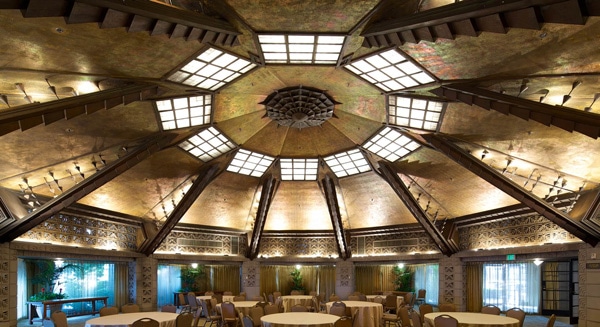
The Aztec Room boasts a ceiling of beautifully painted gold-leaf. Wrigley made it his dining room and black tie dinner was served nightly at 6 pm. No such thing as fashionably late here – tardy guests were turned away. Form follows function: There’s a “Mystery Room,” a speakeasy made necessary by Prohibition. A full bar would pivot into a false wall, if the police made it that far. Searchlights mounted on the building would see them coming.
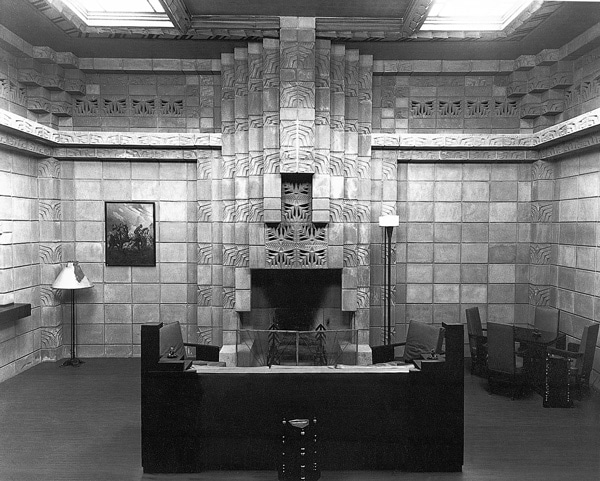
Of 40 different geometric patterns, one was selected for the 250,000 used in the original structures. The fact that they can be easily remade was of vital importance for its reconstruction after a fire in 1973. The blocks are used to create entire walls or as a decorative band, horizontal like a frieze or sculpted into a pillar for lighting. The gorgeous lobby is a perfect example.
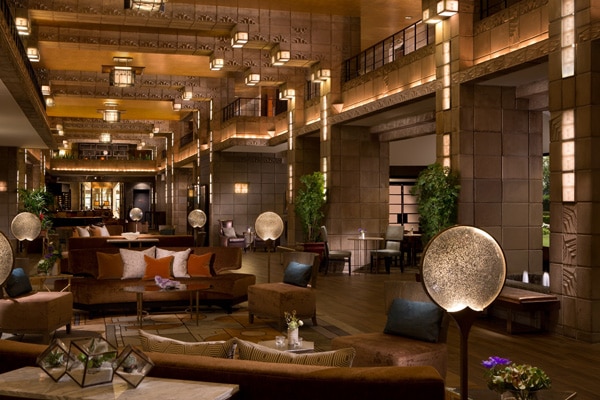
Nothing feels shoehorned, even the addition of 7 swimming pools. Vern Swaback, who is 86 years old, is responsible for many of the additions and renovations. At 17, he was Wright’s youngest apprentice at Taliesin West and stayed on to guide its legacy and school for another 2 decades. Again, another student keeps the Wright vision alive at the Biltmore.
Below is a view of original buildings on the left, with the oxidized copper posts and addition on the right.
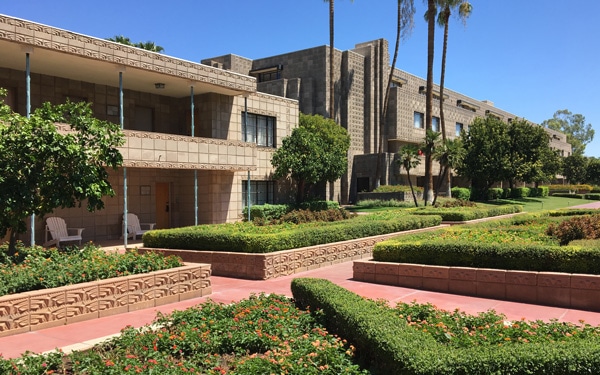
We had fantastic meals with excellent service at “Frank and Alberts” — haute comfort food with a Sonoran twist. We chose the recommended favorites – a beyond tender Arizona prime Ribeye and a juicy “Tomahawk” Pork Chop, whose refined flavor came from Duroc pigs raised by Mennonite farmers.
The meal seemed so complimentary to our trip. It was the 150th anniversary of Frank Lloyd Wright, and the resort paid honor to his memory with special treats. We sat in the famous Arizona Biltmore, the brainchild of one of Wright’s most prominent students and maintained by yet another of Wright’s students, eating a beautifully abstract dessert that played on the structural themes so integral to Wright and his students. The dessert: an ingenious homage called “Wrightfully So” —apple and caramel torte topped with chocolate images of the Guggenheim, Fallingwater, and Ennis House.
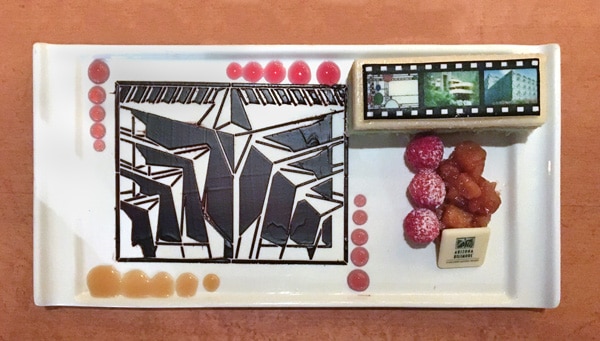
Where We Stayed:
The Conrad Indianapolis
50 W Washington Street
Indianapolis, IN 46204
317-713-5000
www.conradhotels3.hilton.com
The Palmer House
17 East Monroe Street
Chicago,IL 60603
312-726-7500
www.palmerhousehiltonhotel.com
The Arizona Biltmore
2400 East Missouri Avenue
Phoenix, AZ 85016
602-955-6600
www.arizonabiltmore.com

